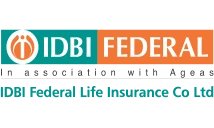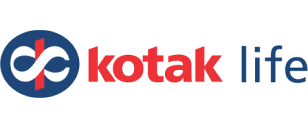
Table of Content
- What is Insurance?
- Classification of insurance plans in India
- How to buy insurance?
- Things to keep in mind when buying insurance
- FAQs
What is Insurance?
Insurance is a risk management tool that promises compensation for the economic loss suffered by an individual in case of specific events. Insurance policies cover different types of risks and if such risks occur and cause a financial loss, the policies pay for the loss suffered. Insurance plans, therefore, provide financial security and should be an important part of your financial portfolio.
Nowadays, individuals have become increasingly aware of the importance of having an insurance plan to cover their financial risks. As such, they are investing in different types of insurance policies for their needs. Whether it is mandatory motor insurance plans or the essential term insurance or health insurance plans, the penetration of insurance is increasing in India. Before you also invest in a suitable insurance plan, you should first understand the different types of policies available and which policy covers which risks.
So, here is a brief overview of different types of insurance plans available in India –
Classification of insurance plans in India
Broadly, the classification of insurance plans can be done under two divisions – life insurance and general insurance. Life insurance covers human lives while general insurance covers financial assets and risky events. Both life and general insurance categories have different types of plans under them. Let’s understand these variants of life and general insurance policies in brief –
Life insurance:
Here is a table containing the brief details of different types of life insurance plans –
| Name of the plan | Term Plan |
| Meaning | These plans cover the risk of premature death.
|
| Salient Features |
|
| Benefits Payable | The sum assured is paid on death of the insured. |
| Variants available | There are four types of term plans –
|
| Name of the plan | Whole life plan |
| Meaning | The plan usually matures when the insured attains 100 years of age.
|
| Salient Features |
|
| Benefits Payable | The sum assured is paid on the death of the insured any time before attaining 100 years of age. |
| Name of the plan | Endowment Plan |
| Meaning | This plan is a savings-oriented insurance plan which not only provides coverage against premature death, it also creates a corpus for the policyholder at the end of the plan term. |
| Salient Features |
|
| Benefits Payable |
|
| Variants available | Pure Endowment, Money Back Plan, Child Plan, etc. |
| Name of the plan | Money-Back Plan |
| Meaning | This plan creates guaranteed returns over the policy tenure, provides insurance coverage and also allows liquidity. The sum assured is paid in parts over the term of the policy at regular intervals. |
| Salient Features |
|
| Benefits Payable | Survival benefits are paid over the policy tenure
|
| Name of the plan | Child Plan |
| Meaning | These plans are designed to secure the financial future of the child even if the parent dies during the term of the policy. Either the parent’s or the child’s life is insured in this plan. |
| Salient Features |
|
| Benefits Payable |
|
| Name of the plan | Unit Linked Insurance Plan |
| Meaning | These are market-linked plans where the premium is invested in market-linked funds. The returns, therefore, depend on market performance. |
| Salient Features |
|
| Benefits Payable | In case of death, the higher of the sum assured or the fund value is paid. If the plan matures, the fund value is paid. |
| Name of the plan | Pension Plan |
| Meaning | These are retirement-oriented plans which create a regular income in the form of annuities. Annuities are paid throughout the insured’s lifetime thereby providing funds even in the older years. |
| Salient Features |
|
| Benefits Payable | Under deferred annuity plans,
Under immediate annuity plans, an annuity is paid immediately after the plan is bought, depending on the annuity option available. |
| Variants available | Immediate Annuity and Deferred Annuity. |
| Annuity Options | There are 7 different possible annuity options and multiple variants of the same. Different annuity providers have different annuity options like:
|
| Name of the plan | Health Plans |
| Meaning | These plans cover specific illnesses and help the policyholder with financial assistance if the insured suffers from the covered medical illness. The health plans offered by Life Insurance companies are usually fixed benefit health insurance plans which cover a specific illness. |
| Salient Features |
|
| Benefits Payable | The sum insured is paid in a lump sum if the illness covered under the plan occurs. |
Coverage and exclusions in life insurance plans
Here are the inclusions and exclusions of life insurance policies
| Inclusions | Exclusions |
| Death during the policy tenure due to accidental or natural causes | Death due to suicide within one year of policy inception or revival |
| Health plans cover specific illnesses | Death due to criminal activities, adventure sports, etc. |
| Death after the policy has been terminated |
Calculation of premium
Premiums of life insurance plans are calculated based on the following factors –
- Age of the insured – the older the insured the higher would be the premium
- Sum assured chosen – higher the sum assured, higher would be the premium
- Term of the plan – higher the term, lower would be the premium
- Medical history – if the medical history is adverse, the premiums are loaded and are, therefore, higher. If there is no history of medical complications, the premiums would be charged at the standard rate
- Gender – premium rates for females are lower than males
- Occupation – if the insured is engaged in a dangerous occupation, the premium is loaded. The premiums charged are, therefore, higher.
General insurance:
There are multiple variants in the general insurance category. However, some of the most popular types of plans include the following –
Each of the above-mentioned types of general insurance plans is further sub-divided into different variants to suit the different coverage needs of individuals. So, let’s understand each type of general insurance plan in brief along with its sub-variants –
Health insurance:
Health insurance plans are those which cover the medical costs if you face a medical contingency. Health insurance plans cover hospitalisation related expenses incurred when the insured is hospitalised.
The different types of health insurance plans include the following –
| Name of the plan | Individual Health Insurance Plan |
| Meaning | Health insurance plans which cover a single individual |
| Coverage Details | Hospitalisation expenses like room rent, doctor’s fees, nurse’s fee, cost of surgery, blood, etc., daycare treatments, organ donor expenses, free health check-ups, ambulance costs, etc. on an indemnity basis |
| Name of the plan | Family floater health insurance plans |
| Meaning |
|
| Coverage Details | Expenses incurred before and after hospitalisation, hospitalisation expenses like room rent, doctor’s fees, nurse’s fee, cost of surgery, blood, etc., daycare treatments, organ donor expenses, free health check-ups, ambulance costs, etc. on an indemnity basis. |
| Name of the plan | Senior citizen health insurance plans |
| Meaning | Health plans cover individuals aged 60 years and above. This could be on an individual basis or a family floater basis. |
| Coverage Details | Coverage for hospitalisation expenses, ambulance charges, daycare treatments, cataracts, joint replacement treatments, etc. on an indemnity basis |
| Name of the plan | Critical illness insurance plans |
| Meaning | Health plans which cover major illnesses and surgical procedures. |
| Coverage Details | The sum insured is paid in a lump sum if the insured suffers from any covered illness or undergoes a covered treatment. Illnesses like cancer, paralysis, open heart surgeries, organ transplants, etc. are covered. |
| Name of the plan | Hospital cash plans |
| Meaning | Health plans pay a fixed benefit if the insured is hospitalised for a period of 24 hours or more. |
| Coverage Details | A daily cash allowance is paid on hospitalisation. The amount of allowance would be fixed and independent of the actual medical costs incurred. |
| Name of the plan | Top-up health insurance plans. |
| Meaning | Health plans come with a deductible limit. Claims exceeding the deductible are paid under the plans. |
| Coverage Details | Hospitalisation expenses, pre and post hospitalisation expenses. ambulance costs, etc. are covered on an indemnity basis. |
| Name of the plan | Super top-up health insurance plans. |
| Meaning | Health plans with deductibles. If the aggregate claims exceed the deductible limit, the plan would cover the excess cost. |
| Coverage Details | Coverage is allowed for hospitalisation expenses, ambulance charges, daycare treatments, organ donor expenses, etc. on an indemnity basis. |
| Name of the plan | Disease-specific health insurance plans. |
| Meaning | Health plans cover specific illnesses like diabetes, cardiac ailments, dengue, etc. |
| Coverage Details | Hospitalisation expenses incurred due to the illnesses covered by the plan are paid on an indemnity basis. |
Exclusions in health insurance plans
Here are some common instances of exclusion in almost all health insurance plans –
- Pre-existing illnesses are covered after a waiting period of 2-4 years.
- Specific illnesses and their treatments, like hernia, appendicitis, piles, joint replacement surgeries, etc. are covered after 1-2 policy years.
- No claim is paid for illnesses within the first 60-90 days of buying the policy.
- Illnesses due to nuclear or radioactive contamination, war, mutiny, participation in adventure sports, etc. are not paid.
- Maternity expenses are not included in the coverage unless specifically stated otherwise.
- HIV/AIDS
- Alcohol or substance abuse
- Cosmetic treatments
- Psychiatric treatments, etc.
Calculation of health insurance premiums
Premiums of a health insurance policy is calculated taking into consideration the following factors –
- Age of the insured – the higher the age the higher would be the premium
- Existing medical conditions – if the insured suffers from any existing medical illnesses, the premiums would be increased
- Gender – females are charged a lower premium than males
- The term selected – if a longer-term is selected, premium discounts are allowed which reduce the premium
- Premium discounts – if there are premium discounts offered by the company, the premium would reduce
- Sum insured selected – higher the coverage amount, higher would be the premium
- A number of members covered – if family members are also added to the coverage, the premium would increase.
Motor insurance:
Motor insurance is taken on vehicles. A motor insurance policy that covers damages caused to third parties is mandatory as per law. Every vehicle on Indian roads is supposed to have a valid insurance cover to be able to run legally.
Motor insurance plans are separately designed for cars, bikes and commercial vehicles. Moreover, there are two types of policies which are as follows –
| Third-party liability-only policy | Comprehensive policy |
| This policy covers the financial liability which incurs if the owner/driver of the vehicle causes bodily injury or death of any individual. Moreover, if any property belonging to a third party is damaged by the vehicle, the financial liability faced for such damage is also covered by the policy. | This policy combines coverage for third party liability and damages suffered by the vehicle itself. Third-party liability due to bodily injury or property damage is covered under the policy. Moreover, if the vehicle itself suffers any damage due to theft, natural causes or man-made causes, the loss suffered is also covered. |
There is also a personal accident cover under both these plans. Under the personal accident cover, accidental death and disablement suffered by the owner/driver of the vehicle are covered for up to INR 15 lakhs. In case of accidental death or disablement, a lump sum benefit is paid.
Exclusions of Motor Insurance Policies
Motor insurance policies do not cover damages incurred due to the following instances –
- War or war-like perils
- Nuclear contamination
- Driving without a valid license
- Driving under the influence of alcohol
- Using the vehicle in violation of its limitations
- Deliberate accidents
- Driving outside India
- Electrical or mechanical breakdown, etc.
A premium of motor insurance plans
Premiums for a motor insurance policy depends on the following factors –
- Make, model and variant of the vehicle
- Insured Declared Value (which is like the sum insured of the policy and represents the value of the vehicle after depreciation )
- Fuel type
- Year of registration
- Age of the vehicle
- Third-party premium
- Modifications that were done to the vehicle if any
- Type of coverage required
- Add-ons selected if any
- Location of the vehicle
- No claim bonus discount if any
- Any other discount offered by the policy
Travel insurance:
Travel insurance policies cover the financial losses suffered due to emergencies when you are travelling to another place. The trip might be for leisure, business or education and there is a travel insurance plan to cover the losses faced in any of these trips.
Travel insurance plans are further subdivided into the following categories –
| Types of travel insurance plans | Meaning |
| International travel insurance | Covers losses suffered on international trips |
| Domestic travel insurance | Covers losses suffered on trips within India |
| Senior citizen travel insurance | Covers individuals aged 60 years and above going on a trip |
| Single trip travel insurance | Covers a single trip taken for a specified duration |
| Annual multi-trip travel insurance | Covers unlimited trips taken within a year |
| Student travel insurance | Covers students going abroad for education |
Coverage and exclusions in travel insurance plans
| Inclusions | Exclusions |
| Medical treatments taken in an emergency when travelling | Pre-existing illnesses and their complications |
| Medical evacuation and repatriation | Travelling against the advice of a medical professional |
| Accidental death and disablement | Participation in hazardous activities |
| Personal liability | War and related perils |
| Emergency cash advance | Nuclear contamination |
| Loss of checked-in-baggage | Pregnancy and related complications |
| Delay of checked-in-baggage | Criminal acts, etc. |
| Loss of passport | |
| Trip cancellation or curtailment, etc. |
Calculation of travel insurance premiums
Premiums of travel insurance plans are calculated based on the following parameters –
- Number of members travelling together
- Age of the insured members
- Destination of travel
- Duration of the trip
- Additional covers, if opted
- Sum insured selected
- Coverage features
Home insurance:
Home insurance policies are those which cover the financial loss suffered if the home and/or its contents are damaged. Home insurance policies prove to be beneficial in covering the losses suffered by your home due to natural or man-made calamities.
There are three types of home insurance policies which include the following –
| Type of policy | Meaning |
| Structure insurance | This policy covers the structure of the home against damage or destruction |
| Contents insurance | This policy covers the contents of the home like electronic appliances, furniture and fittings, jewellery, work of art, personal belongings, etc. against theft or damage |
| Comprehensive insurance | This policy covers both the structure of the home as well as its contents |
Coverage and exclusions in home insurance plans
Home insurance policies have the following coverage and exclusions:
| Inclusions | Exclusions |
| Damage to the structure due to natural or man-made causes | Loss due to war or war-like conditions |
| Theft of contents of the home | Wilful negligence |
| Third-party liability | Consequential loss |
| Cost of alternate accommodation when the house is being repaired or rebuilt | Nuclear contamination |
| Depreciation |
A premium of home insurance policies
The premium of a home insurance policy depends on the following factors –
- The type of policy selected
- The cost of the property
- Cost of contents to be insured
- Policy extensions, if selected
- Location of the property
- Basis of insurance – reinstatement or market value
- Size of the property
Fire Insurance:
Fire insurance policies are those which cover the financial loss suffered if an asset is destroyed or damaged by fire and allied perils.
Fire insurance policies can be of the following types –
| Type of policy | Meaning |
| Valued policy | The policy covers a specific value and pays the value in case of loss |
| Specific policy | The policy covers up to a specified sum insured limit. In case of a claim, lower of the sum insured or the loss suffered is paid |
| Floating policy | The policy covers assets at multiple locations under a single policy |
| Reinstatement value policy | Under this policy, the cost of reinstating the asset which is damaged in a fire or related perils is paid |
| Consequential loss policy | This policy pays for the loss of profit due to the interruption of activities after a fire |
| Comprehensive policy | This policy covers all types of loss suffered by the asset |
Coverage and exclusions under fire insurance plans
Fire insurance plans have the following coverage and exclusions –
| Inclusions | Exclusions |
| Fire | War or nuclear contamination |
| Lightning | Underground fire |
| Riots, strikes or malicious damage | Theft after fire |
| Cyclone, tempest, hurricanes, etc. | Intentional damages |
| Flood | Pollution |
| Impact damage | Damage in cold storage due to power changes |
| Aircraft damage | Loss in earnings due to damage suffered |
| Rockslide or landslide | Removal of debris |
| Leakage from a sprinkler system | |
| Implosion or explosion | |
| Bush fire, etc. |
A premium of fire insurance policies
- Nature of usage of the insured property
- Location of the property
- Value of the assets being insured
- Add-on covers opted
- Size of the property
- Type of policy opted
Marine insurance:
Marine insurance plans cover the damages incurred when goods are being transported from one place to another. These plans, therefore, are very beneficial for businesses as they allow them to avoid a financial loss in case of loss of goods in transit.
Marine insurance policies come in various types the popular of which are as follows –
| Type of policy | Meaning |
| Cargo policy | This policy covers the goods being transported |
| Hull insurance | This policy covers the vessel which is transporting the goods |
| Freight insurance | If the vessel operator loses the freight payable on the goods which have been damaged in transit, the policy would cover such loss |
| Time policy | This policy provides covers a specific time period |
| Voyage policy | This policy covers a single voyage |
| Mixed policy | This policy combines time policy and voyage policy and covers trips taken between specific locations within a given period of time |
| Port risk policy | The policy covers any type of loss suffered by the vessel when it is anchored at a port |
| Block policy | This policy covers the land and sea voyages |
Inclusions and exclusions of marine insurance
The coverage benefits and exclusions in a marine insurance policy include the following –
| Inclusions | Exclusions |
| Sinking or stranding of the ship | Deliberate loss or misconduct |
| Fire or explosion | Riots, war or strikes |
| Earthquake | Insufficient packaging of the goods |
| Jettison or washing overboard | Loss due to delays |
| Damage to the vessel due to the collision, piracy, etc. | Wear and tear of the cargo |
| Natural calamities | Leakage of packaged goods |
| Wreckage removal |
Premiums of marine insurance policies
The premiums of a marine insurance plan depend on the following factors –
- Value and the nature of the goods that are being transported from one place to another
- Amount of freight payable for the transportation
- An inherent risk of the goods
- The route of transportation
- The type of vessel used for transportation and its value
- A destination where the goods are being taken
- Underlying risks of piracy, political instability, etc.
- Possible natural calamities that would incur
Commercial insurance:
Commercial insurance plans are those which are bought by organisations to cover the different types of financial risks that they face. The most popular types of commercial insurance plans include the following –
| Type of policy | Meaning |
| Group Mediclaim policy | A group health insurance policy taken by employers for covering their employees |
| Workmen’s Compensation policy | A policy designed as per the Workmen’s Compensation Act requires organisations to compensate their employees if the employees fall ill or are injured due to the nature of their employment |
| Commercial General Liability insurance | A policy that covers the multiple types of liabilities faced by businesses in their everyday operations |
| Directors and Officers insurance | A policy that covers the directors and officers of an organisation against the liability faced due to their mistakes and errors |
| Doctors Professional Indemnity policy | A policy that covers the liability faced by doctors due to negligence or error in their practice |
| Cyber insurance | A policy that covers the cyber risks faced by organisations and indemnifies them in case of cyberattacks. |
How to buy insurance?
Here are the ways in which you should go about buying a suitable insurance policy for yourself from the different kinds of insurance plans–
- Offline
You can buy insurance policies offline through any of the following modes –- By visiting the branch office of the insurance company and applying for the desired policy physically
- By getting in touch with an insurance agent or a broker and buying the policy sold by him/her
- By contacting an executive of the insurance company to visit you and help you buy the insurance policy
- Online
The online mode is easier as it allows you to buy a suitable insurance policy conveniently, from your own home or office. Moreover, many insurance plans are issued instantly when you buy them online which helps in saving time and effort.Many insurance companies, online aggregator websites and online brokers sell insurance plans online. You can choose any online marketplace and find the best policy that you want.You can also choose Turtlemint which offers you some of the best benefits. Turtlemint is tied up with leading insurance companies, both life and general insurers, allowing you to select the best plans available in the market. You can compare the main types of insurance plans on Turtlemint’s website and then buy the best. You can also get personalised assistance for any queries that you have during the purchase process. Turtlemint’s personalised service helps you find the best insurance plan. Just visit Turtlemint’s website at www.turtlemint.com, compare and buy the plan that you need.
Things to keep in mind when buying insurance:
Now you know how many types of insurance plans are available in the insurance segment. However, when you are choosing an insurance policy, the following things should be kept in mind –
The different forms of insurance are relevant given the different types of financial risks faced by individuals as well as businesses. So, choose suitable insurance plans based on your risks and enjoy financial security. Also, compare the available insurance policies online to find a policy that offers the best coverage benefits at the most affordable premium rates.
FAQs:
- What are the tax benefits of insurance?
Life insurance and health insurance plans allow tax benefits. The premium paid for life insurance policies qualifies as a deduction up to INR 1.5 lakhs under Section 80C. Premiums paid for health insurance policies or riders offered by life insurance companies qualify for deduction under Section 80D. The limit of deduction is INR 25,000 which increases to INR 50,000 for senior citizens. Buying a separate health plan for senior citizen parents and paying premiums for them would also allow an additional deduction of up to INR 50,000. Besides tax benefits on premiums, the benefits received from a life insurance policy are also completely tax-free under Section 10 (10D). - What is the duration of health insurance plans?
Health insurance plans are offered for one year. However, you can buy coverage for two or three continuous years too by paying the aggregate premium at once. - What is group insurance?
Group insurance plans are those which offer coverage to a group of individuals under a single plan. For instance, group insurance plans can be bought by the employer for their employees, banks for their account holder, etc. - Can I buy a life insurance policy for my child?
Yes, you can buy a life insurance policy for your child. In that case, the child would be the life insured and you would be the policyholder. - What is the meaning of the nominee?
A nominee is an individual who is authorised to collect the death benefit if the insured dies.
Found this post informational?
Browse Turtlemint Blogs to read interesting posts related to Health Insurance, Car Insurance, Bike Insurance, and Life Insurance. You can visit Turtlemint to Buy Insurance Online.





























